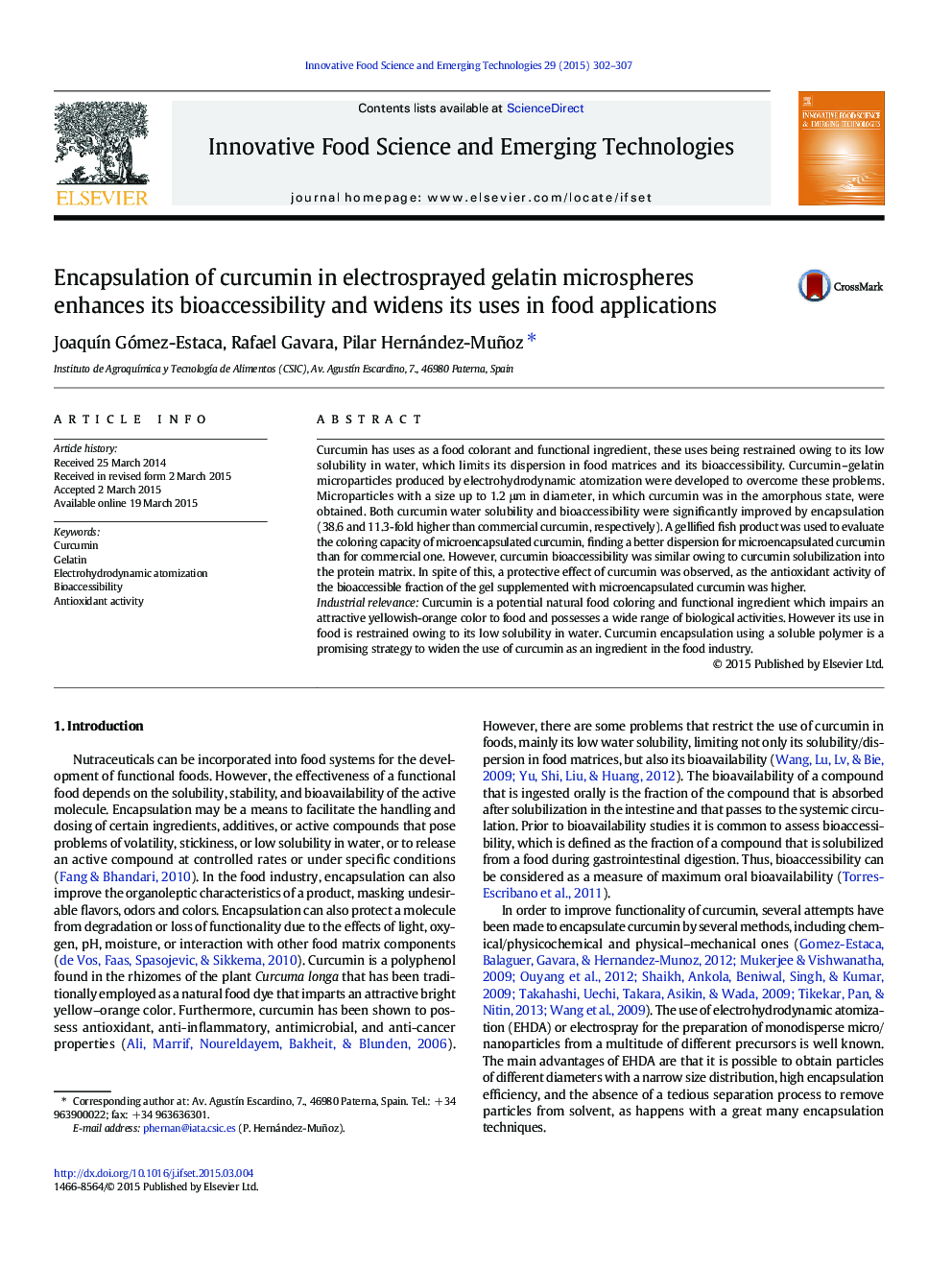| Article ID | Journal | Published Year | Pages | File Type |
|---|---|---|---|---|
| 2086493 | Innovative Food Science & Emerging Technologies | 2015 | 6 Pages |
•Electrodynamic atomization has been used to obtain gelatin–curcumin microparticles.•Water solubility and bioaccessibility of curcumin were improved after encapsulation.•Encapsulation improved curcumin dispersion into a gellified fish product.•Encapsulation increased antioxidant activity of curcumin.
Curcumin has uses as a food colorant and functional ingredient, these uses being restrained owing to its low solubility in water, which limits its dispersion in food matrices and its bioaccessibility. Curcumin–gelatin microparticles produced by electrohydrodynamic atomization were developed to overcome these problems. Microparticles with a size up to 1.2 μm in diameter, in which curcumin was in the amorphous state, were obtained. Both curcumin water solubility and bioaccessibility were significantly improved by encapsulation (38.6 and 11.3-fold higher than commercial curcumin, respectively). A gellified fish product was used to evaluate the coloring capacity of microencapsulated curcumin, finding a better dispersion for microencapsulated curcumin than for commercial one. However, curcumin bioaccessibility was similar owing to curcumin solubilization into the protein matrix. In spite of this, a protective effect of curcumin was observed, as the antioxidant activity of the bioaccessible fraction of the gel supplemented with microencapsulated curcumin was higher.Industrial relevanceCurcumin is a potential natural food coloring and functional ingredient which impairs an attractive yellowish-orange color to food and possesses a wide range of biological activities. However its use in food is restrained owing to its low solubility in water. Curcumin encapsulation using a soluble polymer is a promising strategy to widen the use of curcumin as an ingredient in the food industry.
